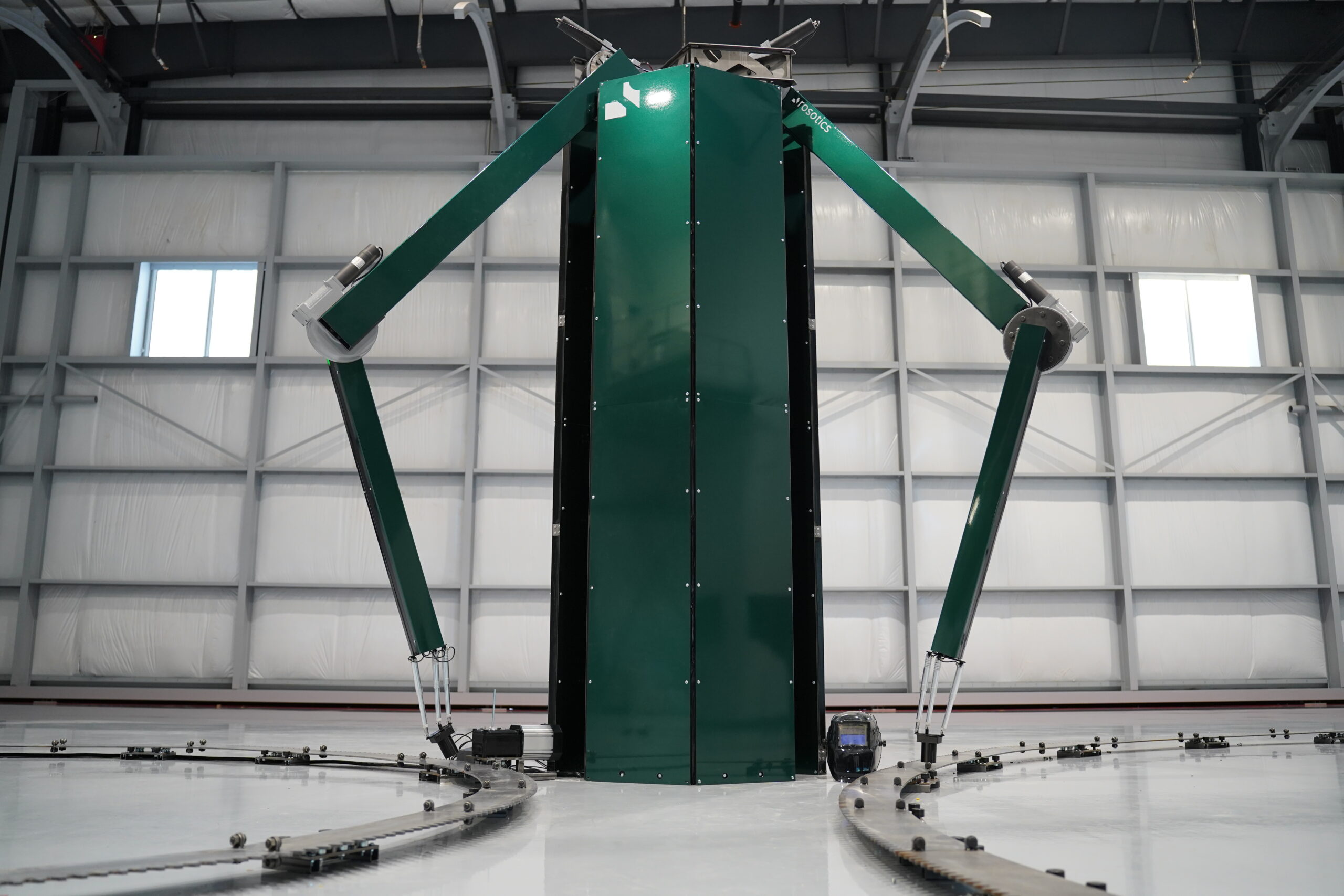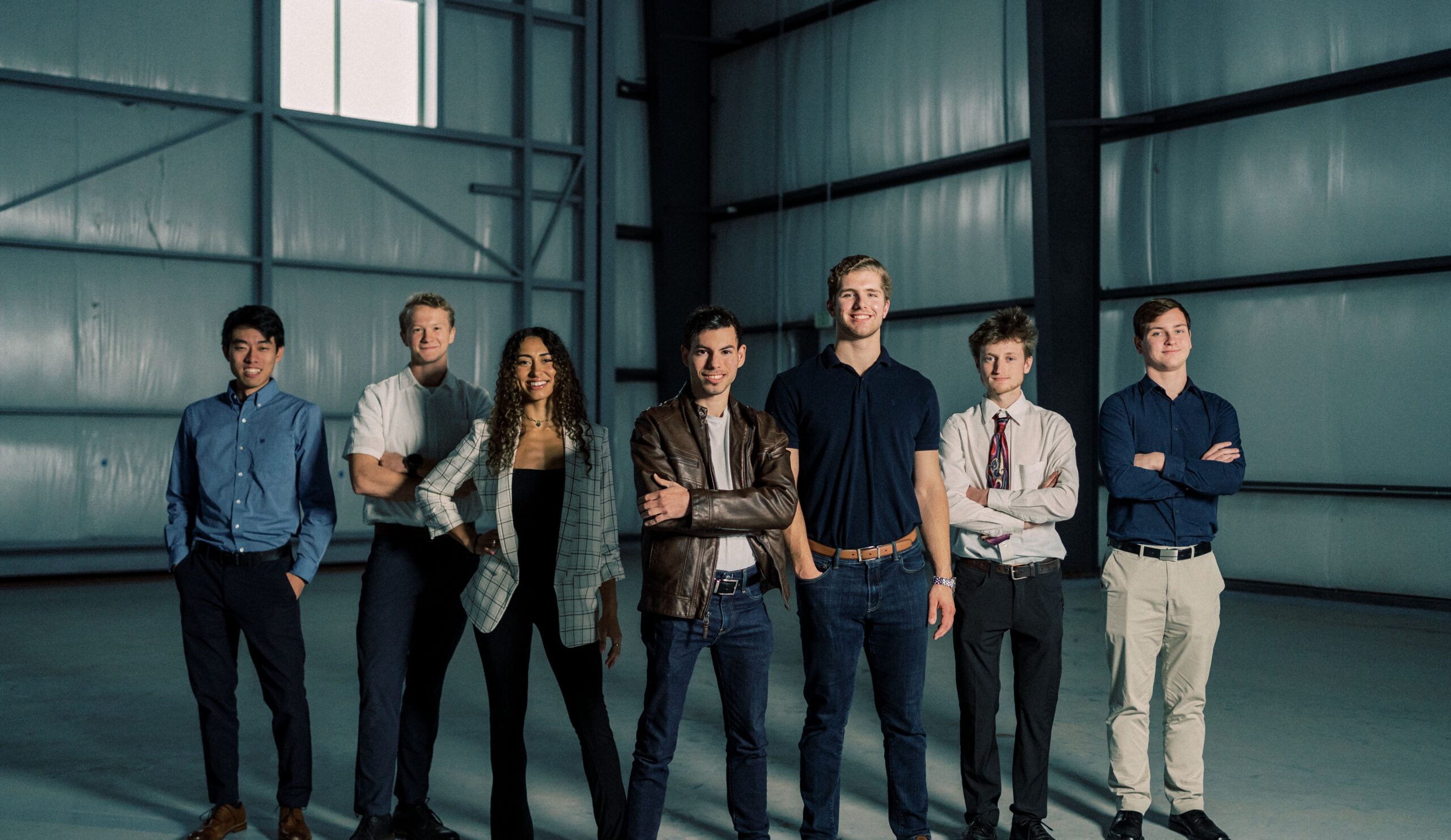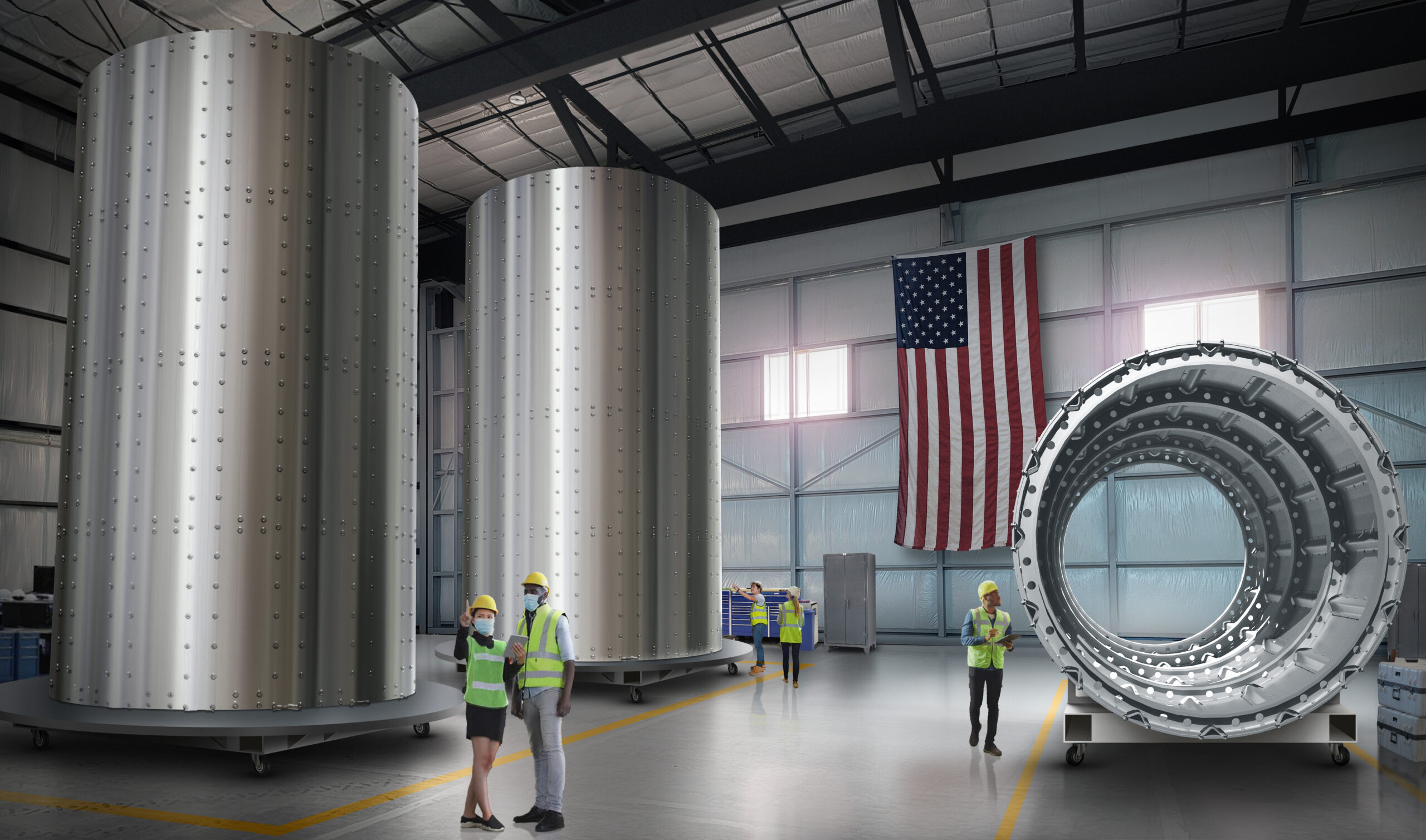With its sights set on the space industry, newcomer Rosotics unveiled a metal 3D printer capable of manufacturing large-format components of up to 30 feet in diameter. At a reveal event held at the Falcon Field Airport in Mesa, Arizona, Friday, March 24, 2023, the company showcased a prototype of its first-generation metal additive manufacturing (AM) system, called Mantis, which will begin booking services to qualified buyers on October 1, 2023, starting at a deposit of $95,000, based on configuration.
Nicknamed “baby SpaceX” in the industry, Rosotics has already caught the eye of investors and leaders in aerospace. It was established in 2019 to develop large-scale metal 3D printers for aerospace and adjacent industries. Using its proprietary biomimicry-inspired “Rapid Induction Printing” technology, the brand has already launched its first heavy metal 3D printer for massive metal parts (like those used in rockets). The technique requires less energy and infrastructure than other laser-based systems while producing an equivalent level o metallurgical performance.
Its process can print at a rate of 15 kilograms per hour per print head in a controlled manner, and Mantis uses up to three simultaneously. The company states that this allows the system to produce large prints, reaching a cumulative print speed of nearly 50 kilograms per hour using challenging materials such as aerospace-grade steel and aluminum.
Designed to be quite versatile in materials, the team plans to expand beyond stainless steel and aluminum, especially into niche applications that demand unique alloys, such as copper-nickel, for the marine industry. One of the most favorable aspects of Rosotics’ Mantis is that the platform works with predominantly commercial off-the-shelf feedstocks, so plenty of firms will find their system an attractive product.
Mantis, which utilizes what Rosotics described at the reveal event as a “structural drive” specifically engineered to articulate each joint of the system’s arms in a particular manner, is designed to be suited to the challenging requirements of complex metallurgy and the pain points of aerospace manufacturers.
“In a world where aerospace innovation is held back by the manufacturing challenges of complex vehicle parts and the unforgiving footprint required for large-scale production, I am incredibly excited to offer solutions to the supply chain issues and infrastructure nightmare that the industry experiences. Mantis is pain-free,” describes Rosotics Co-Founder and COO Austin Thurman.
Starting point
Before unveiling Mantis, 3DPrint.com spoke to Rosotics Founder and CEO Christian LaRosa about the challenges that led him to create the technology and why this is the best time for his company to come out of stealth mode.
During his junior year at Arizona State University, LaRosa became a NASA intern contributing to the agency’s Psyche and Lucy missions for asteroid exploration. It was in these roles that LaRosa realized that the toolsets available for design development and production of aerospace vehicles had limitations. Instead, the revolution in 3D printing promised a change in how parts were created. Like many before, La Rosa’s discovery would lead to the creation of a new printing technique.
“I’m an engineer by training and education, but a founder by necessity, which was overcoming the limitation of 3D printing,” explains LaRosa. “This led to the development and engineering of an entirely new way of 3D printing. Right now, we have our first demonstration machine at our headquarters in Arizona, but our plan is to sell machines to customers. We’re only pre-seed at the moment, but we hope to ramp up production soon and expect to pump out multiple units each quarter.”
With a print volume of up to 30 ft in diameter and several metric tons of printed mass, the first-generation Mantis system promises unmatched production capabilities with vastly simplified long-term maintenance and ease of use. In particular, the company’s aerospace customers will benefit from this innovation for producing traditionally difficult-to-produce structures such as rocket stages, complex domes, and fuselage.
LaRosa says the company is already printing tanks, domes, and integrated bulkheads, as well as running a pilot program for a major player in the rocket business.
Solving challenges
As for the company’s future and machine, LaRosa indicates plans to move into other industries that also demand large-format 3D printing. Rosotics had interest from several sectors. Although aerospace came first, it’s also looking to expand into energy, maritime, and in-time applications beyond Earth –places like Mars or the Moon– where LaRosa considers the technology would be ideally suited.
“Like the process, the hardware is a mutation of processes, and we’ve actually got in the works a few different mutations for a number of industries that will utilize this process. Over time we believe the technology will serve a number of pain points that industries have voiced for a long time,” added LaRosa. “It’s not what we’re doing right now that matters the most because our current machine prototype is probably the least ambitious project we will ever undertake.”
With that statement in mind, we can imagine LaRosa and his team have big plans for the future. But, for now, the young CEO says that moving into the production of the Mantis platform will drive the flywheel of innovation faster because the team will gain feedback from multiple customers. That data will drive the product further into areas of application that are far more difficult and far more complex than anything Rosotics could do.
Rosotics is advancing rapidly as a startup in the metal AM scene. Aside from its highly-anticipated Mantis reveal, the startup also announced the establishment of a highly advanced production campus on Falcon Field to support the progress of manufacturing and spaceflight capabilities in the region. For this undertaking, the team has the support of the Falcon Field Airport in Mesa and the Governor’s Office. In addition, the day of the event was decreed as an Aerospace Innovation Day, in which innovators such as Rosotics may “use their knowledge gained for the betterment of humanity,” fostering new advancements in flight, rocketry, and scientific endeavor.
Subscribe to Our Email Newsletter
Stay up-to-date on all the latest news from the 3D printing industry and receive information and offers from third party vendors.
You May Also Like
3D Printing Unpeeled: New Arkema Material for HP, Saddle and Macro MEMS
A new Arkema material for MJF is said to reduce costs per part by up to 25% and have an 85% reusability ratio. HP 3D HR PA 12 S has been...
3D Printing News Briefs, January 20, 2024: FDM, LPBF, Underwater 3D Printer, Racing, & More
We’re starting off with a process certification in today’s 3D Printing News Briefs, and then moving on to research about solute trapping, laser powder bed fusion, and then moving on...
3D Printing Webinar and Event Roundup: December 3, 2023
We’ve got plenty of events and webinars coming up for you this week! Quickparts is having a Manufacturing Roadshow, America Makes is holding a Member Town Hall, Stratafest makes two...
Formnext 2023 Day Three: Slam Dunk
I’m high—high on trade show. I’ve met numerous new faces and reconnected with old friends, creating an absolutely wonderful atmosphere. The excitement is palpable over several emerging developments. The high...



































